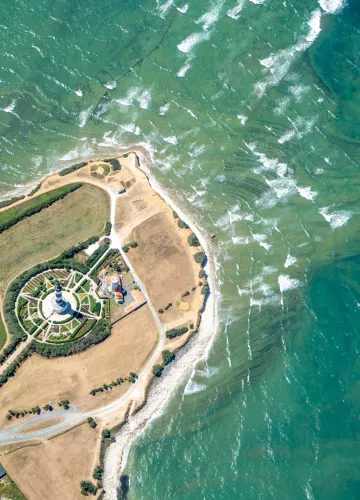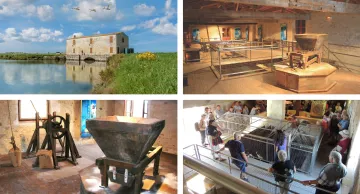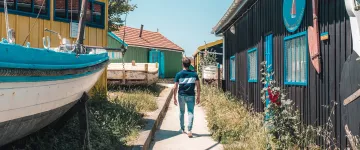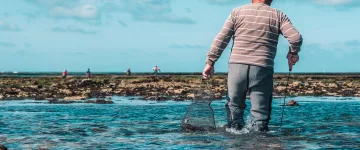
Maritime heritage
The sea is the overriding influence upon the île d'Oléron and the bassin de Marennes, which are noteworthy for their significant heritage, especially the maritime heritage which is inextricably associated with this area. From the Chassiron lighthouse to the Moulin des Loges tide mill, we take a closer look at the different elements that make up our maritime history.
The Chassiron lighthouse
Operational since 1836, the Chassiron lighthouse was designed to guide sailors travelling through the waters of the Pertuis d'Antioche. It dominates the northern tip of the île d'Oléron, towering 46 metres high. Resplendent in ‘convict-style’ stripes, the Chassiron lighthouse is home to a dramatized, ‘living history’ exhibition which tells the story of a young shipwreck survivor. There is also a shop with lighthouse-themed items. On ascending its 224 steps you’ll be able to enjoy stunning views over the île d'Oléron, the balise d'Antioche warning beacon, La Rochelle, the islands of Ré and Aix and, of course, the ocean. Finish off your visit by strolling through the gardens of the lighthouse, which have been laid out in the shape of a compass rose. The lighthouse is open all year round.
The Moulin des Loges tide mill
At Saint-Just-Luzac, at the heart of the marais de la Seudre marshes is one of the last remaining tide mills in Europe, grappling with the wind and the tides in order to make flour. It’s the Moulin des Loges tide mill. Abandoned, stripped of anything of value and slowing sinking into oblivion at the start of the 20th century, this piece of our heritage was restored in the 2000s by the Conservatoire du Littoral (the French coastal protection agency). Now open to the public, it is designed to build awareness of the rich local heritage and wealth of wildlife in the marais de la Seudre marshes. Thanks to careful research into the past, in 2006 the internal mechanism of the mill was restored to how it would have looked in the Middle Ages. Once abandoned, the Moulin des Loges became a tourist attraction and an exhibition and events space.


The charity Chantier naval Robert Léglise
The charity ‘Chantier naval Robert Léglise – Patrimoine Maritime Oléronais’ was founded in 1995. It is perhaps the last vestige of the wooden boat-making industry in the local area. Thanks to this charity, the hundred year-old naval dockyard at the port of Château d’Oléron was saved and renovated, with many boats of traditional design on the island able to gain a new lease of life as a result. This not-for-profit maintains and repairs traditional boats from the Charentes region. It’s a fascinating world, brought back to life with the help of tools, photographs, plans, templates and marine carpentry skills that have been handed down the generations. You can find out all about it here. The dockyard is open to the public all year round on Wednesday mornings from 9am to 12pm. It is also open to groups of a minimum of 10 people (advance booking required).

Fish weirs
If you stroll along the coast of the île d'Oléron at low tide, especially on the northern side of the island, you may see low stone walls built in the shape of a horseshoe stretching out to sea. These stone constructions are fish weirs (static fish traps). These weirs were to be found along the coast of the island wherever it was rocky or there were stones available. They are built using local stone piled up in such a way as to be able to withstand the force of the waves. These huge piles of stone were created using the drystone technique, so they become unstable as soon as one of their number is dislodged. Obviously, their main purpose is to catch fish, but they also act as breakwaters and help reduce the effect of coastal erosion upon cliffs and beaches. It’s a simple concept. Fish enter the weir when the tide is rising and are trapped there when the tide goes back out, caught out by the rapid descent of the water levels as the water exits by the narrow opening. All the fisherman needs to do is gather up the trapped fish. Right up to the 19th century, there were almost 240 fish weirs in use compared with 17 now. Working fish weirs are maintained by volunteers and enthusiasts who strive to keep this tradition alive. Please note that it is strictly forbidden to fish in fish weirs or even to climb up on them.